

This Immortal by Roger Zelazny. The Wanderer by Fritz Leiber (1965. Way Station by Clifford Simak (1964. The Man in the High Castle - Philip K. Dick (1963. The Fountains of Paradise by Arthur C Clarke(1978. Where Late The Sweet Brid Sang Kate Wilhelm(1977. The title of this book comes from Shakesphere's Sonnet 73, but it is nice to know where the title came from.
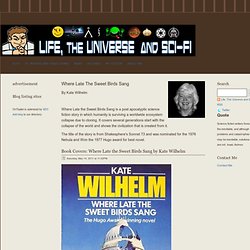
Whether it actually informs the story or is just an interesting name is up to you. That time of year thou mayst in me behold When yellow leaves, or none, or few, do hang Upon those boughs which shake against the cold, Bare ruin'd choirs, where late the sweet birds sang. In me thou seest the twilight of such day As after sunset fadeth in the west, Which by and by black night doth take away, Death's second self, that seals up all in rest. In me thou see'st the glowing of such fire That on the ashes of his youth doth lie, As the death-bed whereon it must expire Consumed with that which it was nourish'd by.
This thou perceivest, which makes thy love more strong, To love that well which thou must leave ere long. The Forever War By Joe Haldeman (1976. With this amount of covers there are a suprizingly large numbers of covers for The Forever War which actually make sense for the book and none that are completly off the radar.
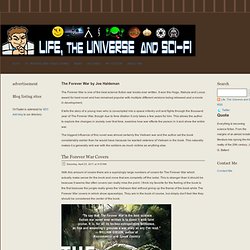
This is stranger than it should be beacuse it seems like often covers can really miss the point. The Dispossessed by Ursula K. Le Guin. Rendezvous with Rama - Arthur C. Clarke (1974. It isn't a huge surprise that so many of these covers are similar.

The ship Rama is described well and is very simple. In addition those that have choosen other images are not the strongest. For example I have no idea what is going on in the cover with the colored dots. The Gods Themselves by Isaac Asimov (1973. The covers of The Gods Themselves are strange.

I can understand this as the images of this book are either not that interesting or almost impossible, but some of these are on the verge of bizzare. Is this in 3D or do they just want to give people headaches when they look at this cover. I just finished reading this book and I really don't have any idea what the image on this next cover is. So far as I remember there are no air battles in The Gods themselves though technically I suppose there are space shuttles of some type as there are people on the moon. To Your Scattered Bodies Go - Phillip Farmer(1972. Ringworld by Larry Niven (1971. The Pierson's Puppeters are the more original of the races in the Ringworld series and in many ways the part that makes the story interesting.
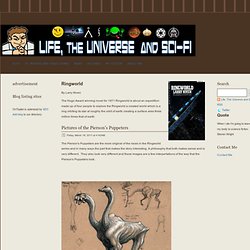
A philosophy that both makes sense and is very different. They also look very different and these images are a few interpertations of the way that the Pierson's Puppeters look. I find this one entertaining beacuse I can't think of a race less suitable to be a green lantern. After all to be a green lantern you have to be fearless and that is simply not the puppeters. I'm also not really sure how they would wear a ring, but that's a differnt point. The Left Hand of Darkness- Ursula K. LeGuin (1970. Stand on Zanzibar by John Brunner. Lord of Light by Roger Zelazny. The Moon Is a Harsh Mistress by Robert A. Heinlein. Dune by Frank Herbert(1966.
Stranger in a Strange Land (19. A Canticle for Leibowitz. Starship Troopers by Robert Heinlein (1960. By Robert A.
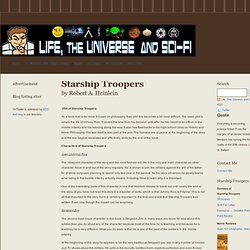
Heinlein Plot of Starship Troopers As a book that is far more focused on philosophy than plot this becomes a bit more difficult. A Case Of Conscience James Blish (1959. By James Blish A Case of Conscience is the 1959 Hugo award winning novel.

This story examines the nature of religion, aliens, morality and science. It does this by presenting an alien race that allows the characters to examine these ideas in a way that you could not easily do so in a more traditional type of story. The story has two distinct parts. The Big Time By Fritz Leiber (1958. Fritz Leiber The Big Time is the Hugo award winning novel for 1958.
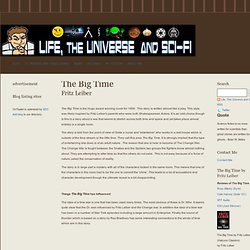
This story is written almost like a play. This style was likely inspired by Fritz Leiber's parents who were both Shakespearean Actors. It is an odd choice though is this is a story about a war that seems to stretch across both time and space and yet takes place almost entirely is a single room. Double Star Robert Heinlein. Robert Heinlein Book Double Star by Robert Heinlien was published in Astounding Science Fiction in three parts in 1956 and published collected that same year.

It won the 1956 Hugo award for best science fiction novel. This book has first person narration. They'd Rather Be Right (The Forever Machine. By Mark Clifton and Frank Riley They'd Rather be Right is a Hugo Award winning novel for 1955.
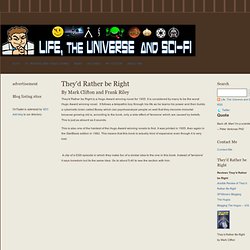
It is considered by many to be the worst Hugo Award winning novel. It follows a telepathic boy through his life as he learns his power and then builds a cybernetic brain called Bossy which can psychoanalyze people so well that they become immortal because growing old is, according to the book, only a side effect of 'tensions' which are caused by beliefs. This is just as absurd as it sounds. Fahrenheit 451. By Ray Bradbury One of the most famous science fiction novels of all time, Fahrenheit 451 won the second Hugo award for a novel. Fahrenheit 451 was published in 1953. There was an earlier short story “The Fireman” which was published in 1951. It follows Guy Montag, a Fireman who burns books and his slow understanding of the truth of the world and embrace of books.
The Demolished Man by Alfred Bester (1953. Farmer in the Sky (1951. The Mule by Isaac Asimov (1946) (Foundation. TimeLine for the Robots & Foundations Universe. TIMELINE FOR THE ROBOTS AND FOUNDATION UNIVERSE Isaac Asimov The Foundation and Robot series of books, written by Isaac Asimov are one of my favorite science-fiction series. Others favorites include The Rama Series [Clarke], Ender Series [Card], Homecoming Series [Card], and the best of the best, The Gap Series [Donaldson]. However, Asimov has a special knack for gripping your attention and holding it for a long period of time. I think this is because all his novels are simple and straight forward; they tell a story instead of explaining the theories behind the technologies and/or ideas in the story.
That, in my opinion, is where most writers falter. The Second Foundation Trilogy, written by Bear, Brin, and Benford is a very good read too since it explains a lot left to the imagination in the original Foundation books. Perhaps one of the reasons I really liked this series was R. I hope you can see how vast this Robots and Foundation universe is. Compiled by Attila Torkos, 1998.